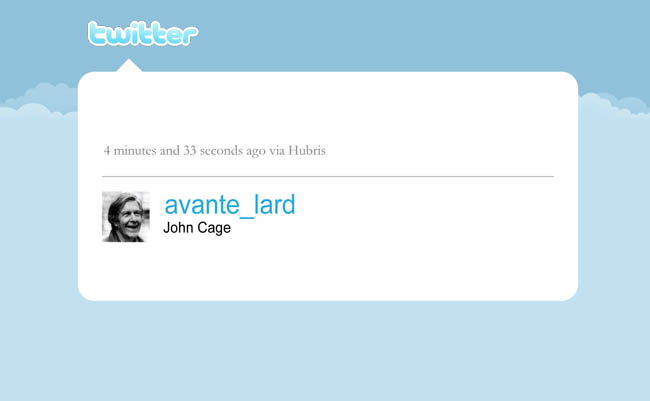Harkness Gospels, Xanten Tanakh, Turkish Qur’an
 The online portion of the New York Public Library’s Three Faiths exhibition includes images of the Harkness Gospels of Landevennec, Brittany, in Latin; the Xanten Tanakh of the Lower Rhineland, scribed by Joseph ben Kalonymus; and a fourteenth century Turkish Qur’an signed by Husam al-Faqir al-Mawlavi, disciple of Jalal al-Din Rumi. (Did I mention they’re all beautiful in a way books aren’t anymore?) Check out the photographic reproductions here.
The online portion of the New York Public Library’s Three Faiths exhibition includes images of the Harkness Gospels of Landevennec, Brittany, in Latin; the Xanten Tanakh of the Lower Rhineland, scribed by Joseph ben Kalonymus; and a fourteenth century Turkish Qur’an signed by Husam al-Faqir al-Mawlavi, disciple of Jalal al-Din Rumi. (Did I mention they’re all beautiful in a way books aren’t anymore?) Check out the photographic reproductions here.
I Like What The Hell Is Going On Over Here And Send Me Some Stuff
Open letter from Kenneth Goldsmith on UbuWeb about UbuWeb and why the wrong way is the right way to run a file archive of unprofitable products.
Fall is because Spring is colder than winter.
Forgot to say something about Thirty days as a Cuban in Harper’s. In to it. If you’re not a subscriber, go to the library or steal it from your doctor’s office. If they ask you why you’re hanging around the lobby, tell them you’re just making sure they’re here for you.
Taking submissions for hahaclever, including and especially ebooks ~10,000 words (like the highlander, there can be only one, what I’m saying is please try to be the highlander). Rebuilding the website, new comics editor coming on board, maybe a text editor, might have a board to come on, shit like that going on. If you’ve sent something in the past and haven’t heard from me, we’re sorry. They will get back to you soon.
At Titular, we could use a Halloween piece because I like when people send holiday pieces like Christmas’s Cocoon by Amber Sparks.
The Cardini Brothers’ Catch-Up has a new website for to look at with your eyes and a new print issue for to buy with your fingertips. The print issue is slick. It’s all comics and poems done in fun and done in love with making and thinking on the future and being ready for it to be happening or to be made to happen. This is a thing they did to promote the last, first issue. READ MORE >
The Muse of Impotence, The Muse of Impossibility

Alberto Manguel, badass
Read Alberto Manguel’s killer essay “The Muse of Impossibility” at Threepenny Review. An excerpt:
One day in December 1919, the twenty-year-old Jorge Luis Borges, during a short stay in Seville, wrote a letter, in French, to his friend Maurice Abramowicz in Geneva, in which, almost in passing, he confessed to Abramowicz contradictory feelings about his literary vocation: “Sometimes I think that it’s idiotic to have the ambition of being a more or less mediocre maker of phrases. But that is my destiny.”
As Borges was well aware even then, the history of literature is the history of this paradox. On the one hand, the deeply rooted intuition writers have that the world exists, in Mallarmé’s much-abused phrase, to result in a beautiful book (or, as Borges would have it, even a mediocre book), and, on the other hand, to know that the muse governing the enterprise is, as Mallarmé called her, the Muse of Impotence (or, to use a freer translation, the Muse of Impossibility). Mallarmé added later that all who have ever written anything, even those we call geniuses, have attempted this ultimate Book, the Book with a capital B. And all have failed. (Read more)
What Reconciles Me to My Own Death (John Berger)
“What reconciles me to my own death more than anything else is the image of a place: a place where your bones and mine are buried, thrown, uncovered, together. They are strewn there pell-mell. One of your ribs leans against my skull. A metacarpal of my left hand lies inside your pelvis. (Against my broken ribs your breast like a flower.) The hundred bones of our feet are scattered like gravel. It is strange that this image of our proximity, concerning as it does mere phosphate of calcium, should bestow a sense of peace. Yet it does. With you I can imagine a place where to be phosphate of calcium is enough.” – John Berger
Timothy Buwalda’s Hyperrealist Smashups

Dislocation, Timothy Buwalda
The drive for originality is also a big impediment to writing. On the one hand, we suffer from a sort of transcendental illusion. We (or I) think to ourselves that if we have an idea it can’t possibly be original precisely because the idea is familiar to us. It is not new to us. But writing is not for us, but for others, whether those others be our own future selves or the self we are becoming in the act of writing (writing has the magical power to remake you) or for the others who might read our scratchings on bit of napkins. On the other hand, originality cannot be anticipated. If originality could be anticipated it wouldn’t be originality. Rather, originality follows the logic of Lacan’s tuche or chance encounter. Originality is something that occasionally takes place, but if it does take place it can only be known as having had taken place, it can never be experienced in the moment. We only ever know that originality has taken place retroactively. As a consequence, it’s important to surrender the desire to anticipate originality so as to clear a space in which the event or chance occurrence of originality might take place.
Ha-ha
Before the advent of mechanical lawnmowers a commonly-used way to keep grass trimmed was to allow livestock, usually sheep, to graze; a ha-ha allowed them to trim the grass of large estates while keeping them out of view from the house.
The ha-ha is a feature in the landscape gardens laid out by Charles Bridgeman, the originator of the ha-ha, according to Horace Walpole (Walpole 1780), and by William Kent and was an essential component of the “swept” views of Capability Brown.
The contiguous ground of the park without the sunk fence was to be harmonized with the lawn within; and the garden in its turn was to be set free from its prim regularity, that it might assort with the wilder country without.
Walpole surmised that the name is derived from the response of ordinary folk on encountering them and that they were, “…then deemed so astonishing, that the common people called them Ha! Has! to express their surprise at finding a sudden and unperceived check to their walk.”
An unusually long example is the ha-ha separating the Royal Artillery Barrack Field from Woolwich Common in southeast London. This deep ha-ha was installed around 1774 to prevent sheep and cattle, grazing on Woolwich Common as a stopover on their journey to the London meat markets, from wandering onto the Royal Artillery gunnery range.
Ha-has were also used at Victorian-Era lunatic asylums such as Yarra Bend Asylum and Kew Lunatic Asylum in Australia. From the inside, the walls presented a tall face to patients, preventing them from escaping, while from outside the walls looked low so as not to suggest imprisonment.






